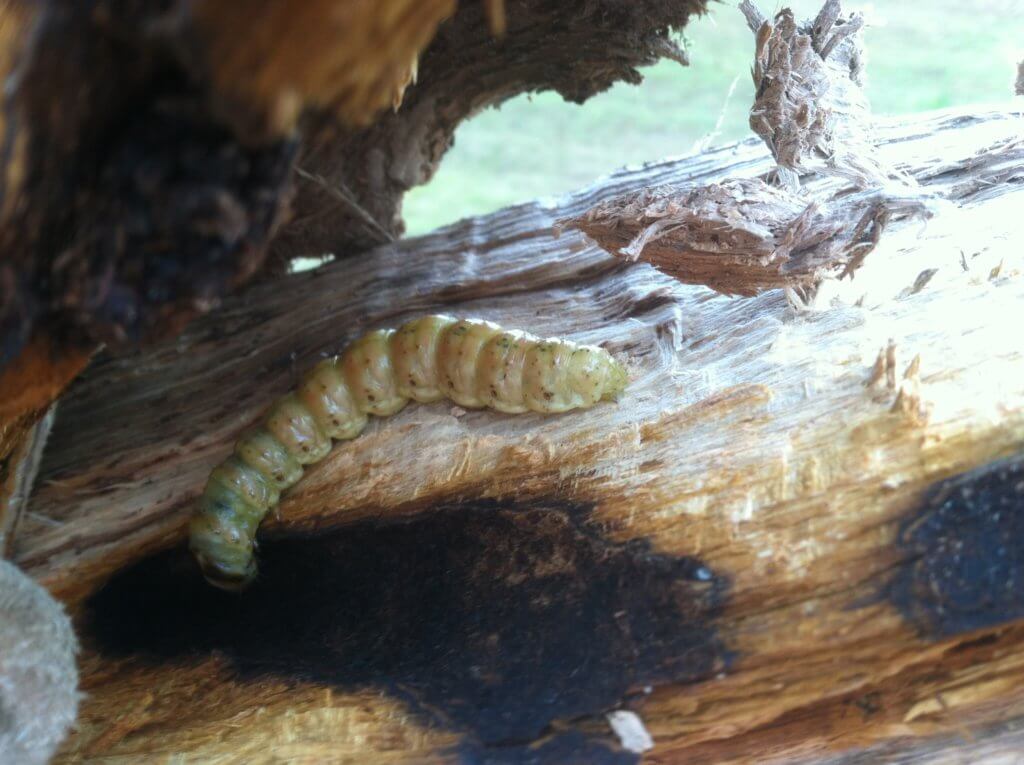Guest blog by David Coyle, Assistant Professor in the Department of Forestry and Environmental Conservation, Clemson University
Firewood. For some, collecting, splitting, and stacking firewood may be considered a right of passage. I mean, when I was growing up, I helped my father replenish the woodpile every year – it was one of those things that was a given, like the changing of the seasons. It’s often free, so long as you collect it yourself, and this makes it a very attractive heat source for many people. In most cases, people will cut firewood from trees that have already died or been damaged – this way, the wood has already started curing, and can be burned sooner. Storms can provide lots of firewood material, and I remember cutting up storm-damaged trees as a kid.
That said, firewood has become a lightning rod of a topic in the last few years and has been implicated in the movement of several invasive species throughout North America. But how long CAN insects live in firewood, really? I’ve heard people say the likelihood of pests moving in firewood is overblown, yet there is plenty of anecdotal evidence that invasive species have been spread through firewood. As a scientist and educator with degrees in entomology, I can tell you that several types of insects that live in wood have life cycles that are perfectly suited to making a life in a piece of firewood, yet up until recently, we didn’t have a lot of really sound science to support these notions (even though having cut and split more firewood in my lifetime than I can remember, I can tell you that many insects can live in a log). But thanks to Dr. Kevin Dodds, a forest entomologist with the USDA Forest Service in Durham, NH, we now have hard data AND evidence that firewood can be a major pathway in which insects are moved.

Larvae found in backyard firewood, Credit: D. Coyle, Clemson University
Dr. Dodds and his team collected firewood in the same manner in which any homeowner would from a forest after a major windstorm blew through and created all sorts of injured/broken/blown down trees – perfect trees for firewood. They collected logs one, two, and three years after the storm, took those logs home, split them into firewood-sized piece – again, just like a homeowner would – and then kept them in special containers (called rearing chambers) for a year to record what came out of them.
And what did come out of those pieces of firewood? THOUSANDS OF INSECTS- even three years after the storm. And while they didn’t find any really nasty invasive species coming out of the firewood in this study, they found members of the same groups of insects that wreak the most havoc in our forests – bark and ambrosia beetles (the same group as the redbay ambrosia beetle, which is likely responsible for up to 500 million dead trees in the southeastern U.S.), long-horned beetles (the same group as the Asian longhorned beetle, which is a very significant tree pest currently being eradicated in three states within the U.S.), and buprestid beetles (the same group as the emerald ash borer, which has killed over 70 million trees and cost the U.S. billions of dollars in management costs). In fact, the third year of the study was when the most insects came out of the logs!
A tree killed three years ago may look dead on the outside, but it’s teeming with life on the inside. By all means, you can use it for firewood. But don’t move it from where it falls to where you burn it very far – ideally you should use it within a few miles of where you get it – because you never know what’s lurking inside that log.
This blog is an independent response and view of the study here: Dodds, K.J., R.P. Hanavan, and M.F. DiGirolomo. 2017. Firewood collected after a catastrophic wind event: the bark beetle (Scolytinae) and woodborer (Buprestidae, Cerambycidae) community present over a 3-year period. Agricultural and Forest Entomology 19: 309-320, https://onlinelibrary.wiley.com/doi/pdf/10.1111/afe.12210



